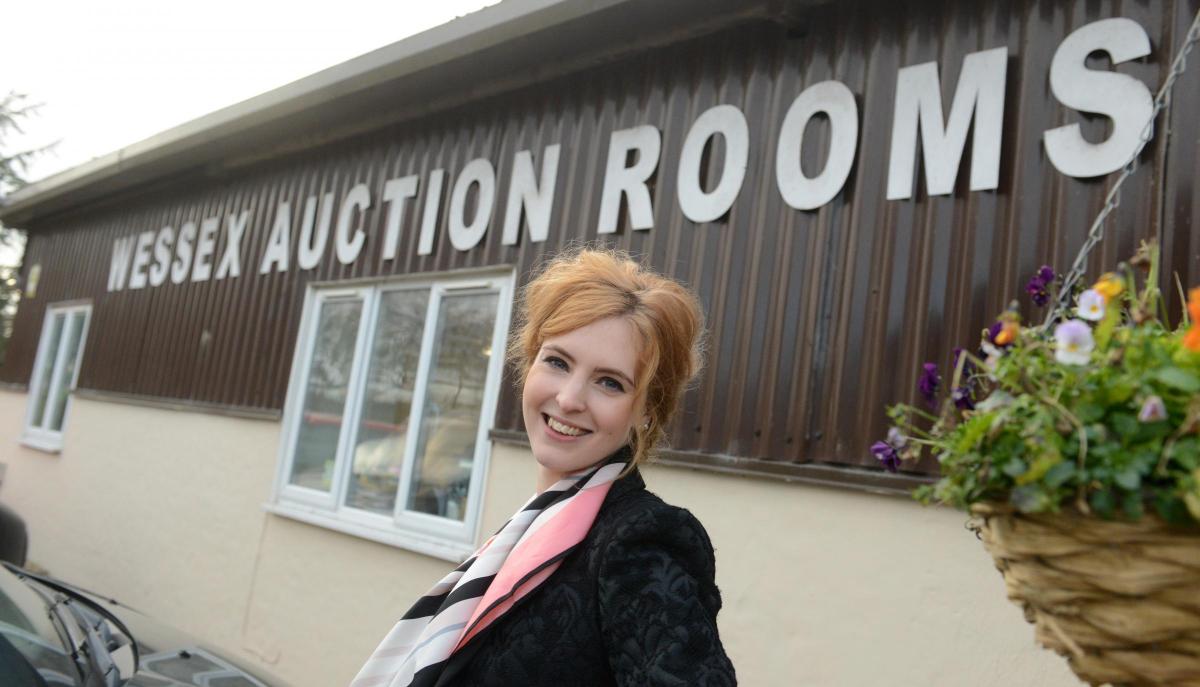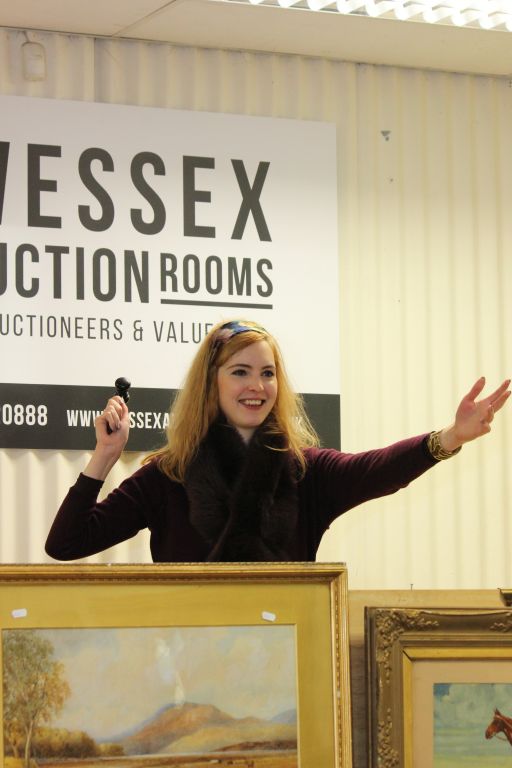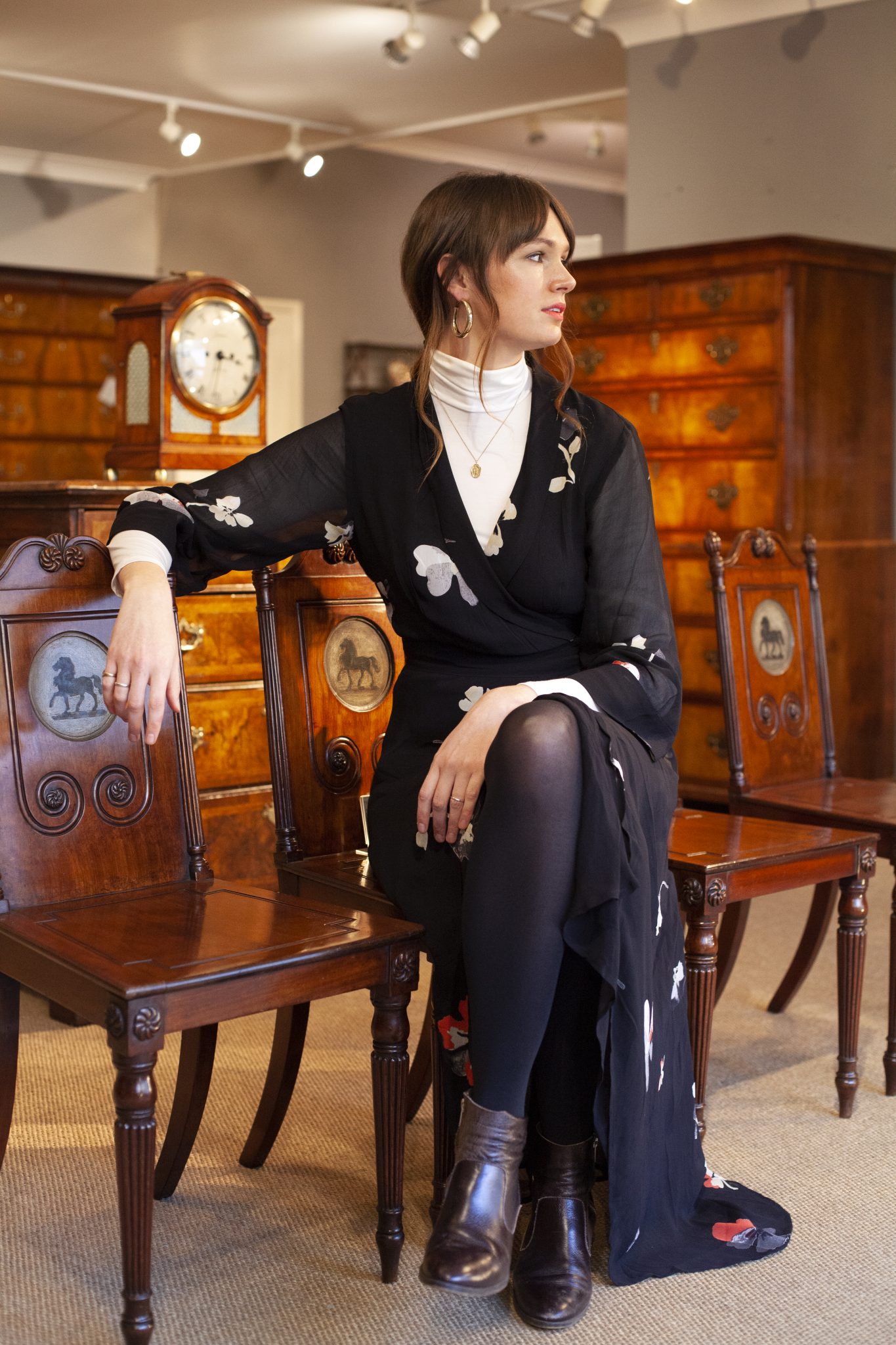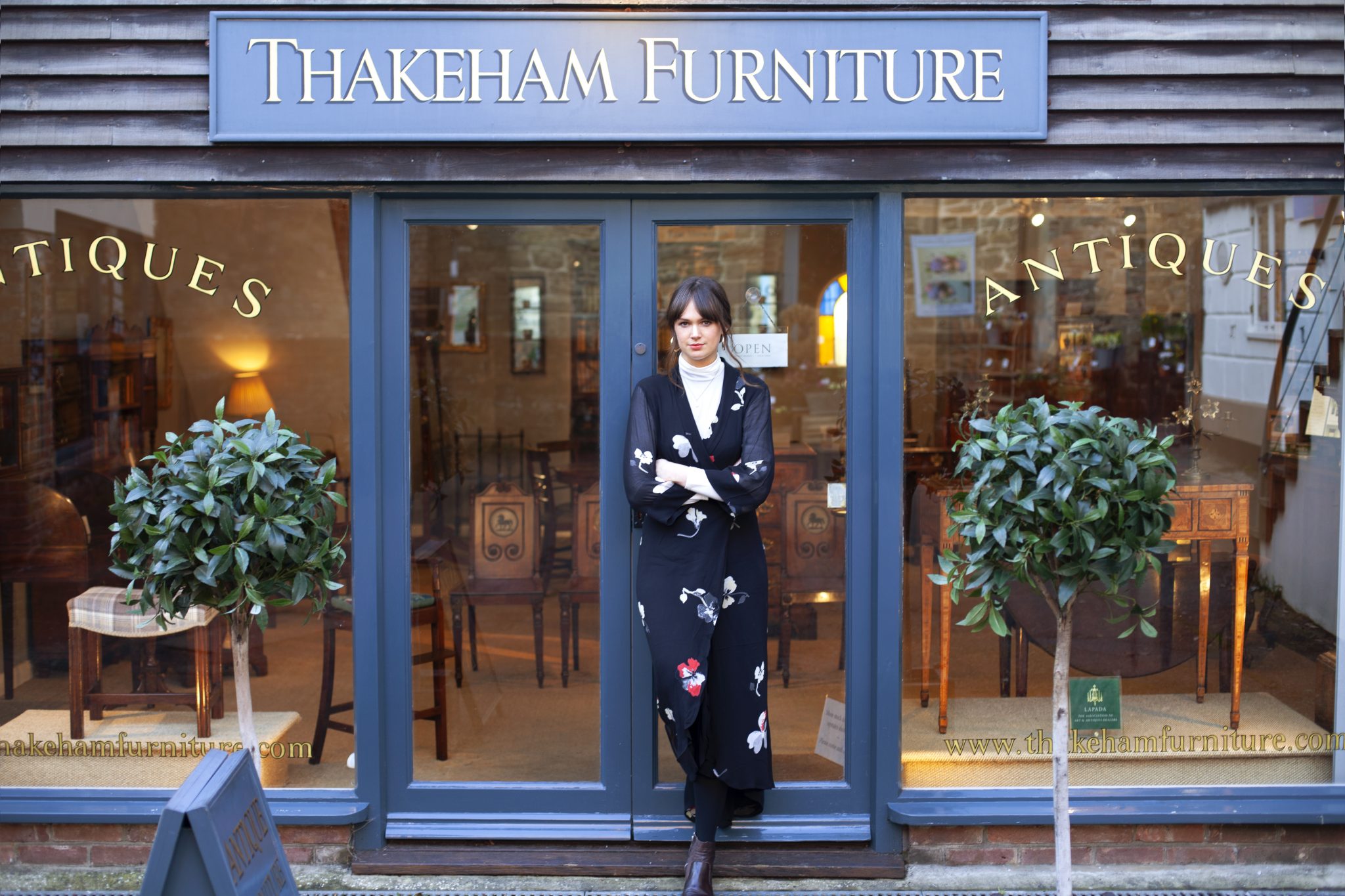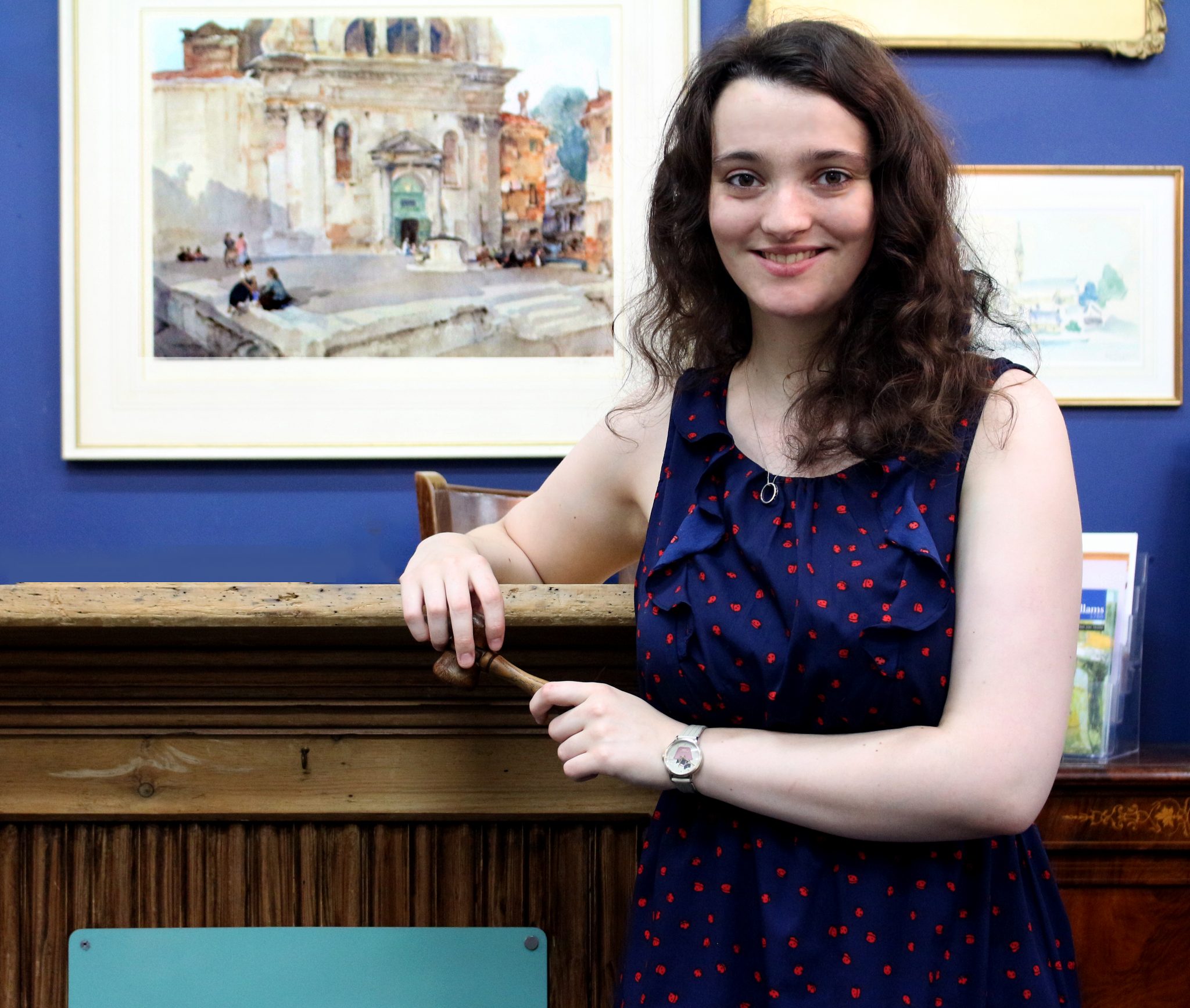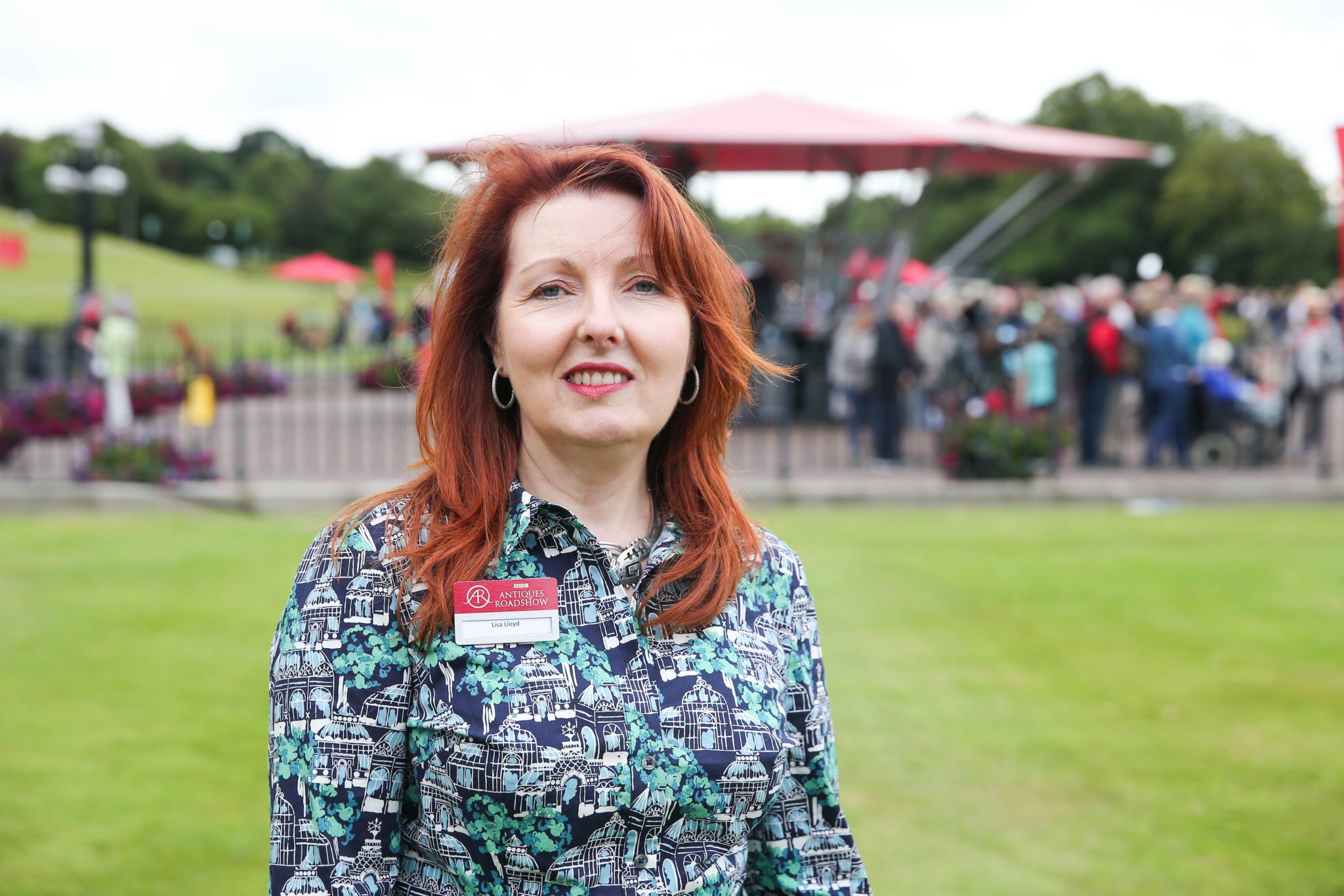Written by Richard Ginger
The world of antiques has long been a male-dominated industry – until now. As The Antiques Road Trip kicks off its 20th season with new host Izzie Balmer, Stylist meets the women who are shaking up the antiques business, and talks to two experts about why women are now embracing the industry.
If your idea of the antiques business is one where claret-cheeked chaps in plum-coloured corduroys rub alongside shady geezers, fists stuffed with cash, straight out of old episodes of Lovejoy, then think again. The Antiques Road Trip host Izzie Balmer, auctioneer Chloe Wood, and retail manager Harriet Chavasse, are busy banging the gavel for change.
Every day, these three young women spend their days as treasure hunters, champions of eco-conscious shopping and lucrative deal-makers. So dust off your pre-conceptions about antiques and meet three women carving out their futures by dealing in the past…
Izzie Balmer, 30, host of The Antiques Road Trip and auctioneer at Wessex Auction Rooms, Wiltshire
How did you become an auctioneer?
After I finished my degree I had no money, no job and nowhere to live. So I did some work experience at the local auction house [and went from there].
What’s a typical day?
There isn’t one! I can be meeting clients, valuing silver and jewellery, cataloguing and photographing items, out on valuation days, then on the rostrum taking the auction.
What do you enjoy the most?
The variety. I love the thrill of finding a hidden treasure in a box of costume jewellery, like the little Victorian moonstone brooch that I recently sold for over £300.
What’s the most expensive item you’ve sold?
An oil painting by a Derbyshire painter called George Turner. These would usually fetch between £3,000 to £7,000, but this one sold for £22,000.
What’s it like being an auctioneer?
It’s so exciting. There are bids flying everywhere on the internet, on the phone, in the room and commissions on the books – there can be a lot of drama and good tension.
What’s surprised you the most?
People have items that are beautiful or worth a lot of money, and they have absolutely no idea.
What are the challenges?
There’s always something to learn. I speak to people in their 80s [who work in the industry] and they still don’t know it all! It’s part of the joy of it.
Is the industry still male-dominated?
I do sometimes get older men presuming that I don’t know anything. It’s just a matter of overcoming their pre-conceived ideas, winning them round and gaining their confidence.
How is it changing?
We’re a young team at Wessex Auction Rooms, so we’re defying that traditional image to show that antiques and auctions are cool.
What do your friends think of your career?
That it’s a fusty, fuddy-duddy industry. But that’s 100% wrong; it’s not boring at all, it’s a fascinating, interesting job.
What’s your most memorable experience?
I had some clients whose mum had passed away, and in a box of costume jewellery there was an arts and crafts silver brooch by British jeweller George Edward Hunt. I sold it for £2,100. They were absolutely overjoyed.
Harriet Chavasse, 31, Retail Manager, Thakeham Furniture, Petworth, West Sussex
How did you get started?
I grew up surrounded by antiques. I trained as a graphic designer, but I didn’t like sitting at a computer all day, so I started working in my mum and dad’s business. That was six years ago. I fell in love with it.
What do you love about it?
Being around old things that are so tactile. The patina means that you can’t help but stroke pieces as you walk past. I find some comfort in it, especially in an age filled with technology and gadgets.
What’s a typical day?
I do a bit of everything, and I’ve never had a job where every day is so different. My tasks can include answering emails, organising deliveries, photographing each piece, writing descriptions for our website, dealing with customers.
What do your friends think of your job?
They love it! They think I’m like an old witch who works in a dusty antiques shop. They come to see me and think it’s fascinating.
Is the industry still male-dominated?
Yes! I won’t lie. But it’s gotten so much better as I’ve gotten older. For ages customers would come in and say, ‘Oh, is your father in?’ and I would say, ‘No, I’m in charge, how can I help?’.
Are young people buying antiques?
Yes – eclecticism is really big now. People don’t have to stick to one period, it’s much more about the overall aesthetic. They’ve seen something on Pinterest and want to emulate it.
Chloe Woods, 23, Auctioneer, cataloguer and valuer at Mallams in Oxfordshire
How did you get into antiques?
My grandmother was a collector/borderline hoarder. I would sit in her living room for hours drinking cups of lemonade, fascinated by looking at things in the room that were from a world I didn’t know.
What’s a typical day?
Every day is different – you don’t know what could be brought in the door or found in the next property. You may have a day of research and cataloguing, or it could be a sale day.
What skills do you need?
There is no required qualification and no history degree prepares you for what you’ll see. You have to love what you do, be keen to learn, and a good memory helps! Good ‘people skills’ are a must.
What surprises you?
The amount of things people get rid of; the throw-away culture we live in today is frightening.
What’s most challenging?
Amassing the required knowledge. I’m a general valuer, which means knowing everything about every object that comes through the door. My goal is to learn at least one new thing every day.
What do your friends think of your career?
They have mixed opinions. Some are very supportive and see it as unusual or interesting; others thought I’d never be able to make a living out of it. Some of my teachers at school said it was ‘not a wise career move’.
What’s been your best experience?
That’s a tricky one! I’ve seen so many beautiful and rare things. Probably taking to the rostrum for the first time and the nod of approval from my colleagues.
Does the industry attract young women?
There are more women joining the industry, which is a great thing to see. However, there is a long way to go to balance the numbers.
Would you encourage young women to enter the industry?
I would encourage anyone who has a genuine love of the job/industry to get involved, regardless of their gender. If you love history and want to learn about the past, then art and antiques can be a great way to go. But it can be very demanding – if you don’t love it, don’t do it.
Why are more women joining the antiques industry?
Roo Irvine from BBC’s Bargain Hunt
Roo Irvine is the newest recruit to the BBC’s Bargain Hunt and a regular on Antiques Road Trip. She also runs Kilcreggan Antiques in Argyll & Bute, Scotland.
“My advice to women thinking about entering the antiques industry? Don’t hesitate. As someone who worked in the online gaming industry when it was 95% male-dominated, I find the antiques industry is welcoming and warm.
“I think it’s becoming more mainstream, thanks to the influx of TV programmes which move antiques away from the traditional audience and make it accessible to every class, race, age and sex. It’s the easiest and perhaps the least intimidating time to join such an intriguing and fascinating industry.”
Antiques Roadshow expert Lisa Lloyd
Antiques Roadshow expert Lisa Lloyd has worked in antiques for over 25 years, including 16 years as an auctioneer and director of Rosebery’s in South London. She now runs an art and antiques business in Wiltshire.
“When I started out in the auction world in the mid-Eighties, female roles were largely administrative. I felt I was slightly breaking the mould as a female auctioneer. Later, as a company director in the Nineties, I was always saddened by the lack of female applicants for vacant roles. It’s been heartening in recent years to see more young women visibly working in the business – the diversity can bring a lot to any industry.
“It can be a very rewarding career, you never stop learning and for anyone with a passion for history or design and a willingness to work hard I highly recommend it.”
This article was originally published in February 2019
All images supplied by interviewees
Source: Read Full Article
